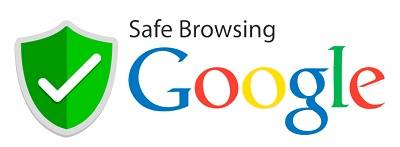In 2026, choosing the right CRM (Customer Relationship Management) software isn’t just a tech decision—it’s a growth decision.
The right CRM empowers your team, strengthens customer relationships, streamlines sales processes, and delivers insights that drive smarter decisions. But with dozens of options, features, and price points, how do you choose the one that actually fits your business?
This guide breaks it down step by step so you can confidently select a CRM that aligns with your goals, scales with your business, and gives you a competitive edge.
💡 Why Choosing the Right CRM Matters More Than Ever
Today’s customers expect fast, personalized, and seamless experiences across all channels. A CRM helps you:
- Centralize customer data
- Automate repetitive tasks
- Track and optimize sales pipelines
- Drive better customer engagement
- Forecast sales and analyze performance
Choosing the wrong CRM? It can waste time, frustrate your team, and leave growth on the table. Let’s avoid that.
🔍 Step 1: Define Your Business Needs
Start by answering key questions:
- What are your main CRM goals? (e.g., lead tracking, sales automation, customer support)
- Who will use the CRM? (Sales? Marketing? Support? All three?)
- How many users do you need today—and in the next 2–3 years?
- Are there existing tools or platforms (email, accounting, marketing software) the CRM must integrate with?
🎯 Pro tip: List your top 5 must-have features versus nice-to-haves.
⚙️ Step 2: Know the Core Types of CRM
There’s no one-size-fits-all. CRMs come in several flavors, each designed to support different business functions.
🔹 Operational CRM
- Automates daily sales, marketing, and support tasks.
- Ideal for managing direct customer interactions.
Example: HubSpot, Freshsales
🔹 Analytical CRM
- Focuses on data mining, reporting, and customer behavior analysis.
- Great for businesses that rely on data-driven strategies.
Example: Salesforce, Zoho Analytics CRM
🔹 Collaborative CRM
- Prioritizes communication between departments (sales, support, marketing).
- Essential for improving cross-team visibility.
Example: Microsoft Dynamics 365, Zendesk Sell
📈 Step 3: Prioritize Features That Drive Impact
Focus on CRM features that solve your biggest challenges. Here’s a checklist of the most requested features in 2026:
- ✅ Contact & deal management
- ✅ Sales automation & pipeline tracking
- ✅ Custom workflows and task automation
- ✅ AI-powered forecasting & lead scoring
- ✅ Omnichannel communication (email, chat, phone, social)
- ✅ Customizable dashboards & reporting
- ✅ Mobile access & offline functionality
- ✅ Easy integrations with tools like Slack, Outlook, QuickBooks, Shopify, etc.
📊 Bonus: Look for AI features that help uncover customer intent, segment audiences, and personalize outreach.
💰 Step 4: Evaluate Total Cost of Ownership (TCO)
CRM pricing models vary:
- Free or freemium options work great for startups (e.g., HubSpot, Bitrix24).
- Subscription-based CRMs offer flexibility with monthly/annual billing.
- Enterprise CRMs involve custom quotes, setup costs, and advanced functionality.
🧮 Don’t forget: Include costs like onboarding, user training, integrations, and scaling (more users, more features).
🧪 Step 5: Test Drive Before You Commit
Reputation is good, but real-world testing is better.
- Sign up for free trials or product demos
- Ask your team to test usability and key features
- Check support responsiveness and knowledge base quality
- Try building a sales pipeline or email workflow from scratch
🧠 Ask yourself: “Will my team enjoy using this every day?”
🔐 Step 6: Consider Security, Support, and Scalability
A CRM is long-term infrastructure, so treat it that way.
🔐 Security:
- Look for encryption, multi-factor authentication, GDPR/CCPA compliance.
🧑💻 Support:
- Evaluate support channels: live chat, email, phone, 24/7 availability.
- Check for onboarding resources, knowledge bases, and training programs.
🔄 Scalability:
- Can the CRM grow with your team?
- Are advanced features unlocked in higher plans?
- Will it handle your customer base at 10x size?
🏆 Top CRM Picks in 2026 (Based on Business Type)
| Business Type | Recommended CRM | Why |
|---|---|---|
| Startups & Freelancers | HubSpot CRM | Free, simple, scalable |
| SMBs | Zoho CRM | Versatile, affordable |
| Sales-Driven Teams | Pipedrive | Visual pipelines, easy UX |
| Enterprises | Salesforce | Deep customization & AI |
| Microsoft Ecosystem | Dynamics 365 | Seamless Office 365 sync |
| Customer Service Focus | Freshsales/Freshdesk | Built-in omnichannel tools |
| Ecommerce | Klaviyo CRM | Email & SMS personalization |
🎯 Final Thoughts: Your CRM Is Your Competitive Advantage
The right CRM isn’t just a tool—it’s the central nervous system of your customer operations.
In 2026, businesses that thrive will be those that:
- Personalize at scale
- Automate smartly
- Analyze deeply
- And build lasting customer relationships
Choose a CRM that works for how you sell, how you serve, and how you grow.
💬 Need help narrowing down your CRM options?
I can help you compare platforms based on your industry, budget, and goals—just ask!


